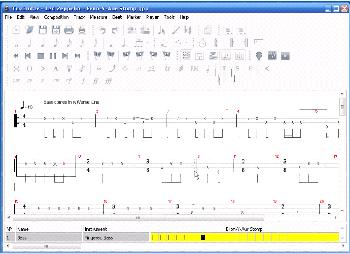

One difference between this and paper is that with the software, you have to set the duration of each note, and it has to be logical (the notes and rests of each voice in each measure have to add up). The notation can be turned off if you don't want to see it, and it will just put the stems on the tab so you can still read the rhythm. To use it, you just enter your tablature (numbers) on the tab line (strings), and musical notation is generated for you. You would use it if you want error-checked, professional-looking tablature either for yourself or to share with others. It's like a word processor for tablature. For those that play fretted, it has a pretty neat chord generatorĪnyone else use Tux Guitar? Tips? Problems? You can copy and paste groups of measures - that's useful. Shortening the duration of a note in that voice and then changing it Tux automagically enters rests, and sometimes they get screwed up. So, use Ctrl+1 andĬtrl+2 (on the number pad) to switch as you enter notes. youĬan't delete a Voice 2 note while your in Voice 1. Have the voice selected in order to work with those notes. The point is that you can have different durations, like a ringing bass There are two "voices" which you typically use for bass/treble notes. you canĬhange the tuning on it as needed and use "Save as" to get a new tune

Power Tab 3-string doc just fine, and let me compose, save, print, andĮverything. Tux CAN do 3-string, even though the dialog won't let you. I used the regular "Windows-x86 Installer" version.
#Tux guitar tuning install#
The "Excelsior Jet" version didn't install for me. You don't need to read music, but you do have to understand To use Tux, you just click on the tab line and start putting in I've used in the past, and its printouts are better.Īs an example, I did "Joyful, Joyful, We Adore Thee" for 3-stringįretless. Some glitches, but I was able to do a tune with it that will work for I recently gave Tux another shot and it's gotten pretty good.


 0 kommentar(er)
0 kommentar(er)
